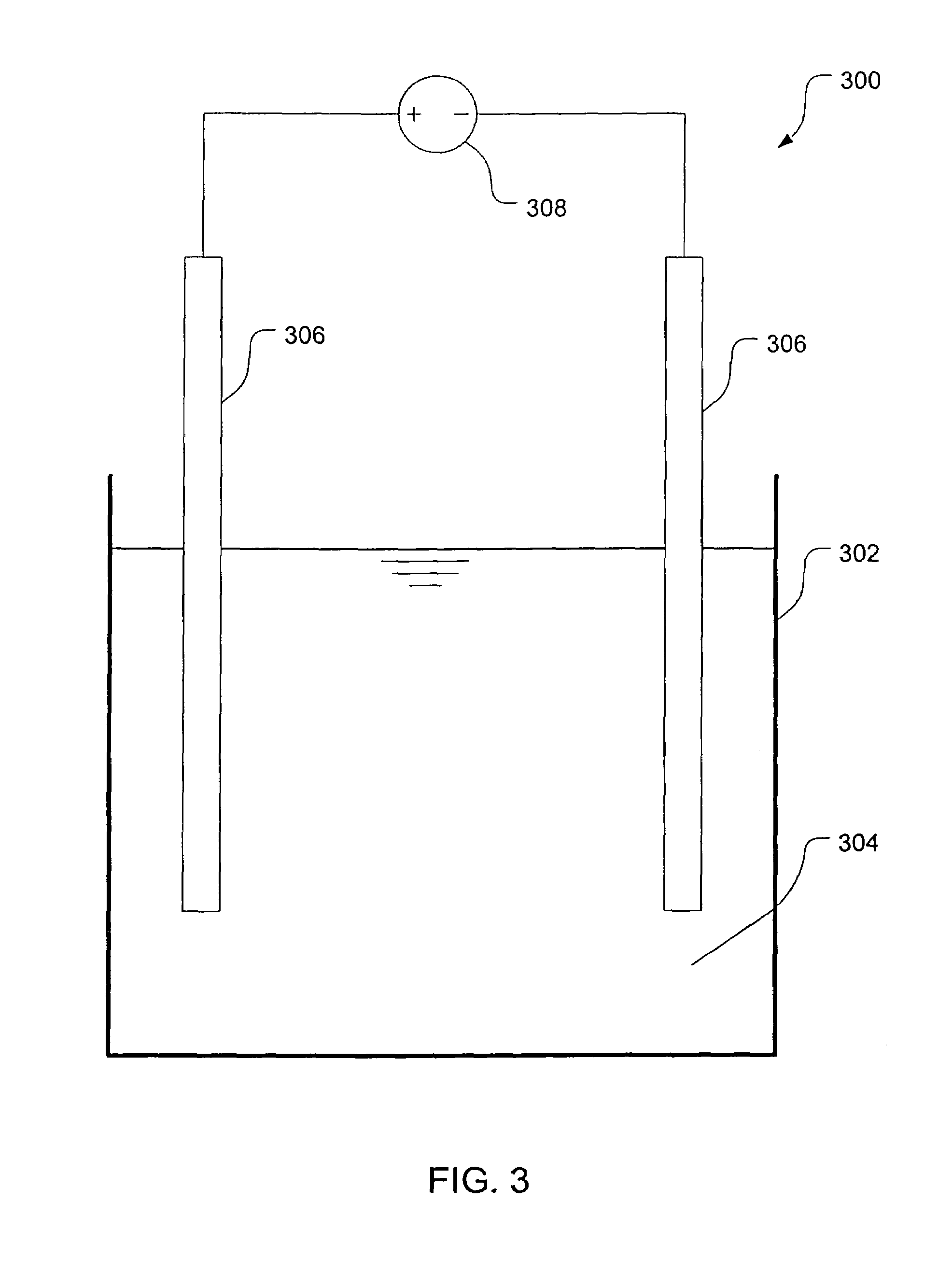Method for preparing polymers containing cyclopentanone structures
a technology of cyclopentanone and polymer, which is applied in the field of polymer production, can solve the problems of complex and troublesome, the 9-fluorenone has not been electrolytically polymerized to date, and the poly(9-fluorenone) has proved difficult to prepare, so as to increase the yield of poly(9-fluorenone)
- Summary
- Abstract
- Description
- Claims
- Application Information
AI Technical Summary
Benefits of technology
Problems solved by technology
Method used
Image
Examples
example 1
[0081]In a vessel for electrolysis (width 170 mm×depth 60 mm×height 150 mm), three nickel plates (each 150 mm×100 mm×0.127 mm) were installed in parallel. The inner nickel plate was a working electrode (anode) and the two outer nickel plates were counter electrodes (cathode). 1.2 L of a mixture of fluorene (0.01 mol / L) and LiPF6 (0.1 mol / L) in propylene carbonate was added to the vessel. The three nickel plates were immersed in the mixture to a depth of 90 mm each. The electrolysis was carried out by a constant-current method. The electrolysis was carried out for 5 hours under the constant-currents of 0.2 A, 0.15 A, 0.1 A, 0.06 A, 0.03 A and finally 0.015 A with an upper limit of 9V each time. After 5 hours, the inner electrode (anode), on which the polymer was deposited, was pulled out of the electrolyte mixture. The polymer was peeled away from the electrode and the plate immersed into the electrolyte mixture, and the electrolysis was repeated 4 times. The collected polymer was wa...
example 2
[0088]In a vessel for electrolysis (width 170 mm×depth 60 mm×height 150 mm), three nickel plates (each 150 mm×100 mm×0.127 mm) were installed in parallel. The inner nickel plate was a working electrode (anode) and the two outer nickel plates were counter electrodes (cathode). 1.2 L of a mixture of fluorene (0.01 mol / L) and LiPF6 (0.1 mol / L) in propylene carbonate was added to the vessel. The three nickel plates were immersed in the mixture to a depth of 90 mm. Two lithium metal sheets (12mm×30mm×0.38mm) were used as reference electrodes. Each sheet was placed between the anode and the cathode. The electrolysis was carried out by a potential-sweep method. The electrolysis was carried out for 4 hours under a potential width of 4.5–6.7 V and a sweep time of 50 mV / sec. The inner electrode (anode) on which the polymer was deposited was pulled out of the electrolyte mixture, and the polymer was peeled off. The plate was immersed again in the electrolyte mixture. The electrolysis was repea...
example 3
[0095]In a vessel for electrolysis (width 170 mm×depth 60 mm×height 150 mm), three nickel plates (each 150 mm×100 mm×0.127 mm) were installed in parallel. The inner nickel plate is a working electrode (anode) and the two outer nickel plates are counter electrodes (cathode). 1.2 L of a mixture of fluorene (0.05 mol / L) and LiPF6 (0.2 mol / L) in propylene carbonate was added to the vessel. The three nickel plates were immersed in the mixture to a depth of 90 mm. The electrolysis was carried out by a constant potential method. The electrolysis was continued for 4 hours under the constant potential of 6.6 V, after a constant current of 2 A was flowed till the potential went up to 6.6V. The inner electrode (anode) was pulled out of the electrolyte mixture, and the polymer peeled off. The plate was again immersed into the electrolyte mixture. The electrolysis was repeated three times. The collected polymer was washed with propylene carbonate and then with acetonitrile, and dried at 170° C. ...
PUM
| Property | Measurement | Unit |
|---|---|---|
| temperature | aaaaa | aaaaa |
| current density | aaaaa | aaaaa |
| current density | aaaaa | aaaaa |
Abstract
Description
Claims
Application Information
 Login to View More
Login to View More - R&D
- Intellectual Property
- Life Sciences
- Materials
- Tech Scout
- Unparalleled Data Quality
- Higher Quality Content
- 60% Fewer Hallucinations
Browse by: Latest US Patents, China's latest patents, Technical Efficacy Thesaurus, Application Domain, Technology Topic, Popular Technical Reports.
© 2025 PatSnap. All rights reserved.Legal|Privacy policy|Modern Slavery Act Transparency Statement|Sitemap|About US| Contact US: help@patsnap.com



